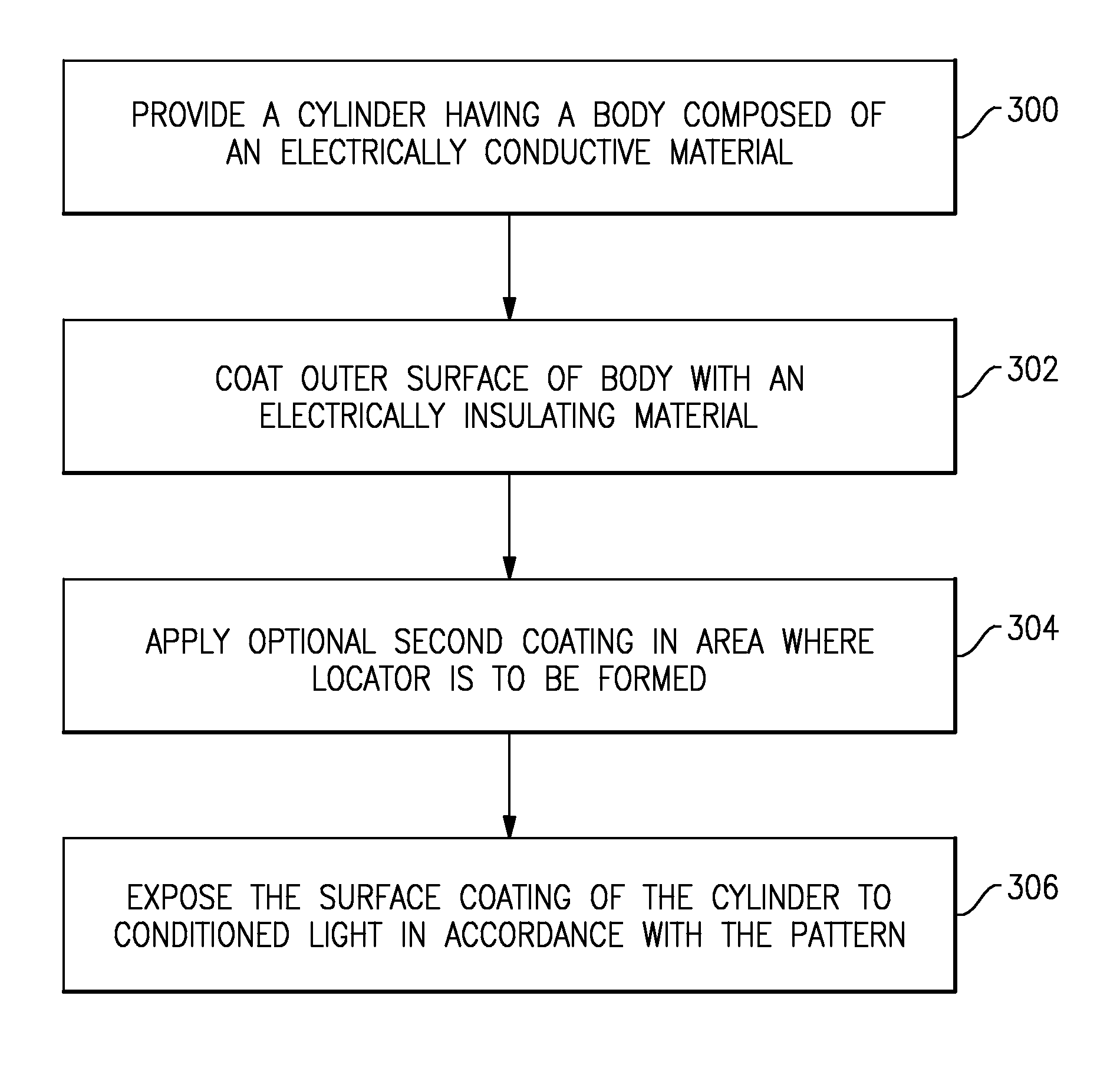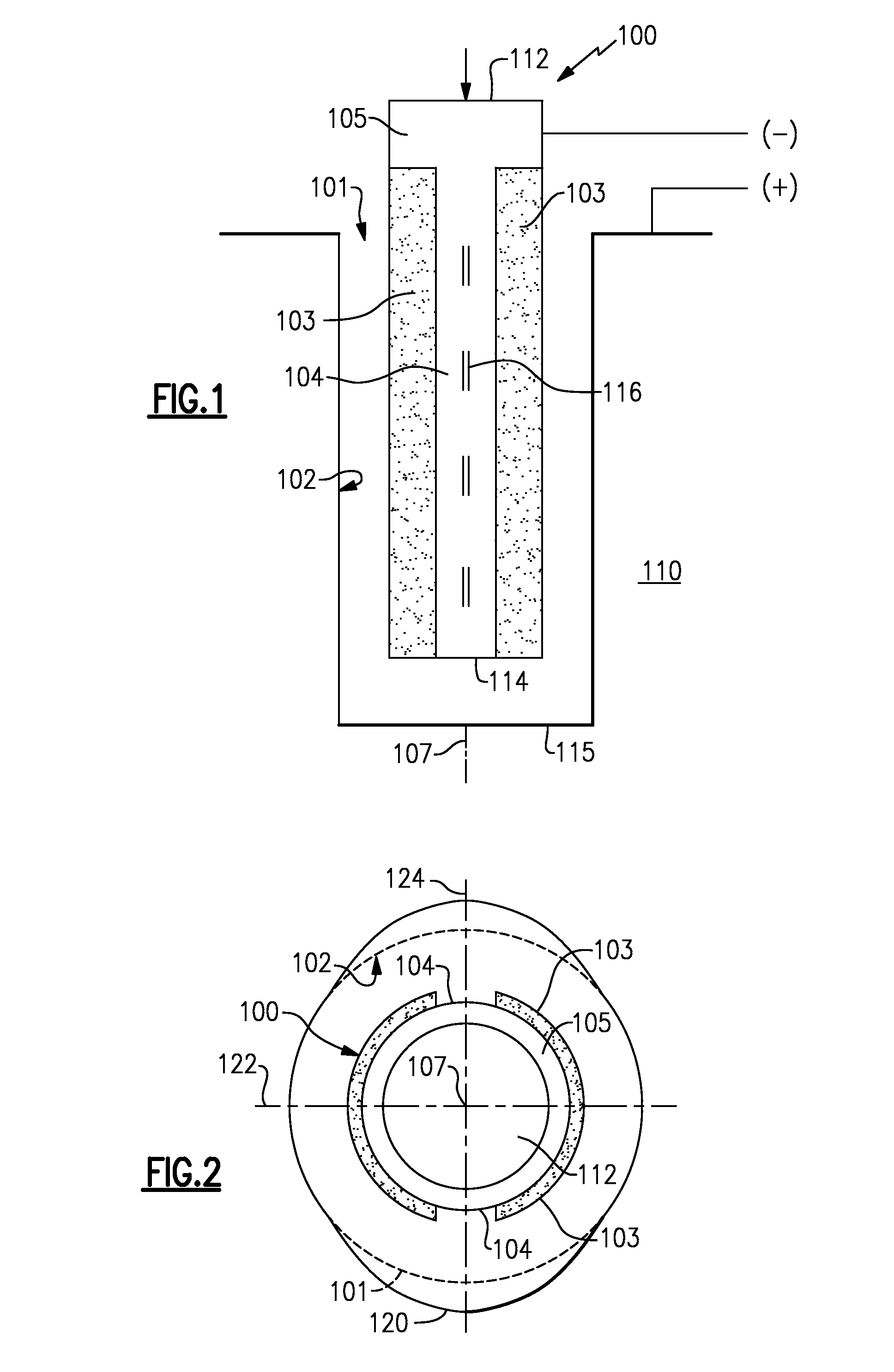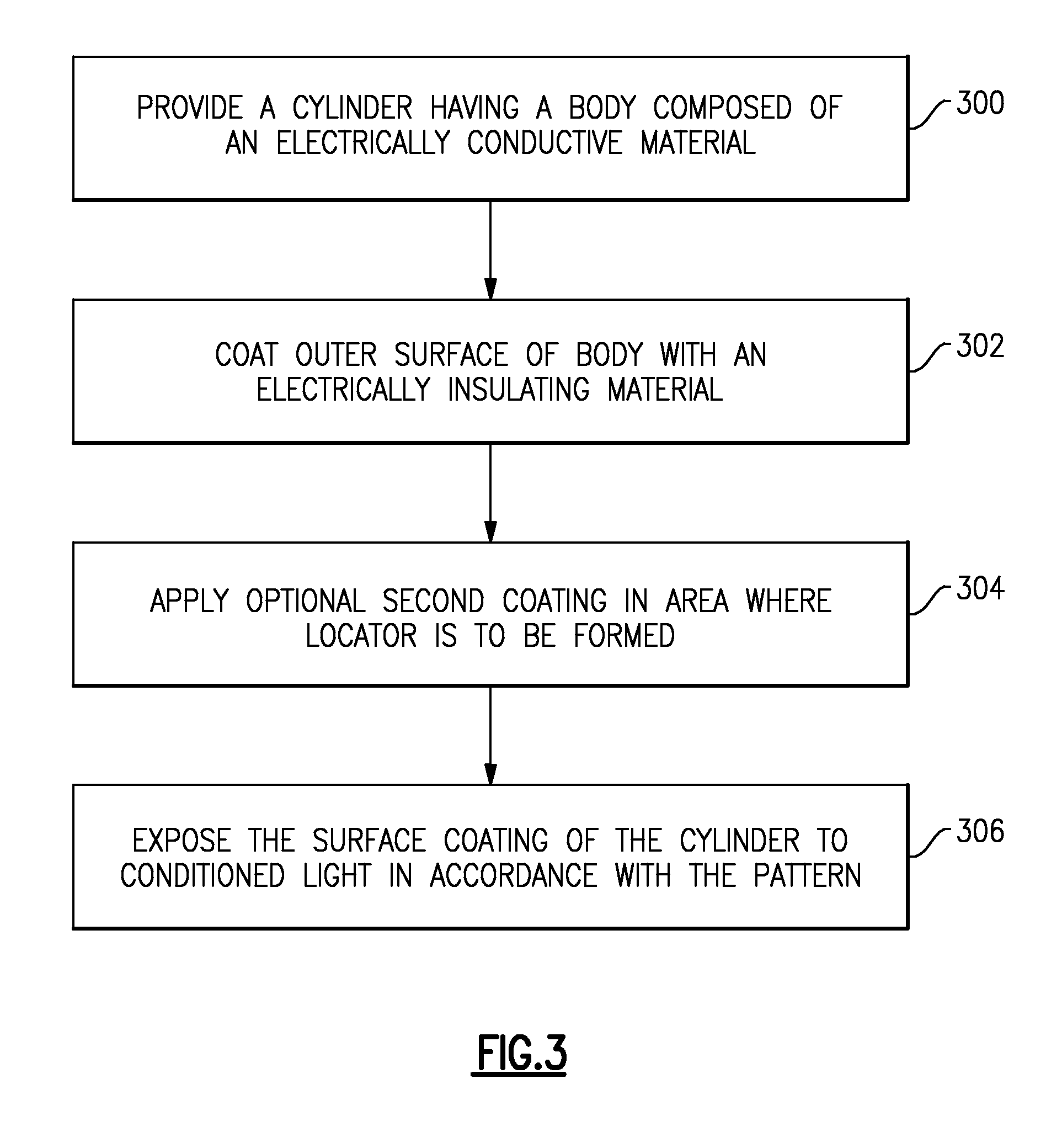Method and tool for forming non-circular holes using a selectively coated electrode
a selective coating and non-circular hole technology, applied in the direction of manufacturing tools, electrical-based machining electrodes, machining electrodes, etc., can solve the problems of low process efficiency of cyclic dwelling methods and none of the above methods are directed to producing non-circular holes
- Summary
- Abstract
- Description
- Claims
- Application Information
AI Technical Summary
Problems solved by technology
Method used
Image
Examples
Embodiment Construction
[0020]Referring to the drawings wherein identical reference numerals denote the same elements throughout the various views, FIG. 1 depicts an electrode 100 of the invention positioned in a circular hole 101 with a substantially straight wall 102 of an electrically conductive workpiece 110. The circular hole 101 can be produced using any known process, such as STEM, casting, and the like. FIG. 2 shows the electrode 100 of the invention after a non-circular hole 120 has been created from the circular hole 101. In the illustrated embodiment, the circular hole 101 has a substantially straight wall 102. However, the invention can be practiced by using the electrode 100 in a circular hole that does not have substantially straight walls. For example, the hole 101 can be circular, but the walls may have turbulators, such as ridges, and the like, formed thereon.
[0021]In the embodiments shown in FIGS. 1 and 2, the electrode 100 comprises a hollow cylinder 105 made of an electrically conductiv...
PUM
| Property | Measurement | Unit |
|---|---|---|
| Electrical conductivity | aaaaa | aaaaa |
| Electrical conductor | aaaaa | aaaaa |
Abstract
Description
Claims
Application Information
 Login to View More
Login to View More - R&D
- Intellectual Property
- Life Sciences
- Materials
- Tech Scout
- Unparalleled Data Quality
- Higher Quality Content
- 60% Fewer Hallucinations
Browse by: Latest US Patents, China's latest patents, Technical Efficacy Thesaurus, Application Domain, Technology Topic, Popular Technical Reports.
© 2025 PatSnap. All rights reserved.Legal|Privacy policy|Modern Slavery Act Transparency Statement|Sitemap|About US| Contact US: help@patsnap.com



